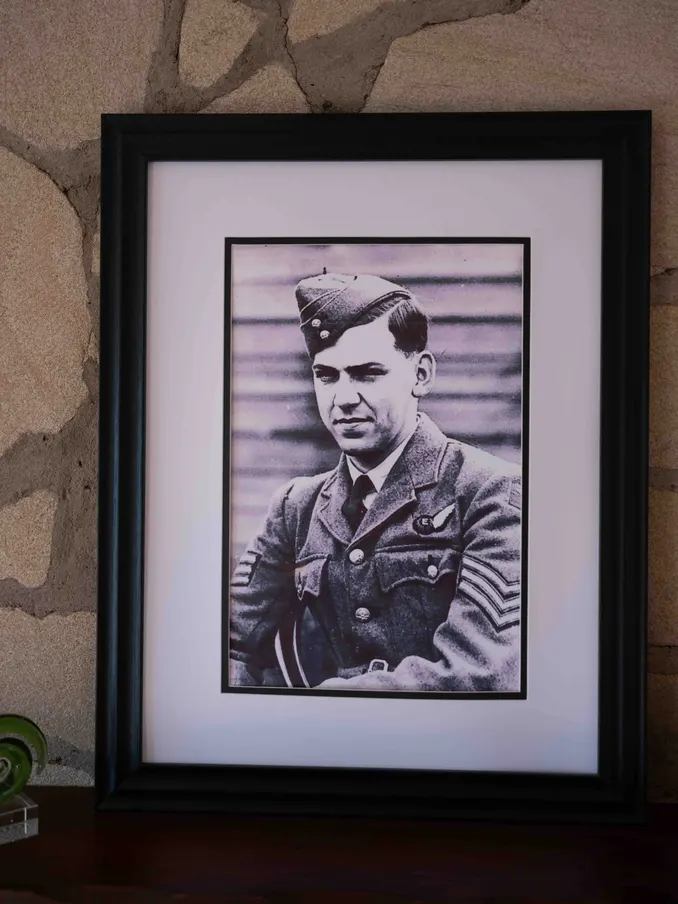As thousands of men embarked on vessels on 5th June to begin the perilous journey to Normandy, thousands more boarded aircraft, to be dropped or landed behind enemy lines ahead of the main invasion. These included paratrooper Sidney Cornell and gilder-borne trooper Bill Gladden. At the same time, aircraft flew sorties against strategic targets, including the Lancaster bomber carrying Gilbert Gray. Later in the Normandy campaign, Georges Muller would parachute into occupied territory to radio back German troop movements and vital strategic information – but at grave risk.



Private Sidney Cornell
7th Battalion, Parachute Regiment
Portsmouth-born Sidney volunteered for the Airborne Division, landing behind enemy lines with 7th Parachute Battalion near Pegasus Bridge on D-Day. His courage became legendary, and he was later awarded the Distinguished Conduct Medal and promoted to
Sergeant. His great nephew Chris leads the family research and is proud of Sidney, who delivered vital messages under enemy fire.
“He was just in the thick of it and his job was to be the Company runner. He was running around, there were bullets pinging all over the place. They said he got wounded in the shoulder, and probably the leg, about four wounds in all, but he just carried on regardless. And that was the thing, he wasn't going to let a wound in the shoulder stop him. He could have been taken out of the field and sent home, but he was determined not to. He was working closely with his senior officers because that was part of his job. He was literally a messenger between them all.
I know that on one occasion he went in with one of his senior officers and they captured a couple of Germans who were snipers and taking out their men. And he and another group went into a farmhouse and got the snipers out of there and captured them.”
Sidney was killed in action in Germany one month before the end of the war in Europe. He had three sons and a daughter; he never knew his three grandchildren and three great grandchildren.
Sergeant Gilbert Gray
Flight Engineer, 106 Squadron, RAF Bomber Command


Captain Georges Muller
Sussex Teams, Bureau Central de Renseignements et d’Action (BCRA), Free French Forces
Georges, from Alsace, was very active in the Resistance before leaving France for England, where he arrived in January 1944. He underwent Commando training and volunteered for the Sussex Teams. This was a unit of 120 French nationals who received specialist training in covert operations, including sabotage and message encryption. A month after D-Day, he parachuted behind enemy lines to radio back vital information such as enemy troop movements.
His grandson, Hervé, has spent many years piecing together Georges' story.
« My grandfather was a member of the ‘Libération Sud’ movement, responsible for printing a resistance newspaper as well as forged papers. He also helped sabotage trains and housed resistance fighters. As the political police intensified their control, he decided to leave France in April 1943.
I learned that Georges returned on the night of 5th July 1944 when he parachuted into Fouilleuse, in Oise, with four other agents. I have the coordinates of the drop zone. He was the head of a mission called ‘MURAT’ and was accompanied by a radio operator, Théodore Refanche – they worked in pairs. To protect his family, he did not contact them. He left behind four children, and we might ask: why did he do this, if not out of patriotism? He fought for Freedom. »
Georges and other resistance fighters were killed in a German ambush on 31st August 1944.
Trooper William ‘Bill’ Gladden
6th Airborne Armoured Reconnaissance Regiment, Royal Armoured Corps







